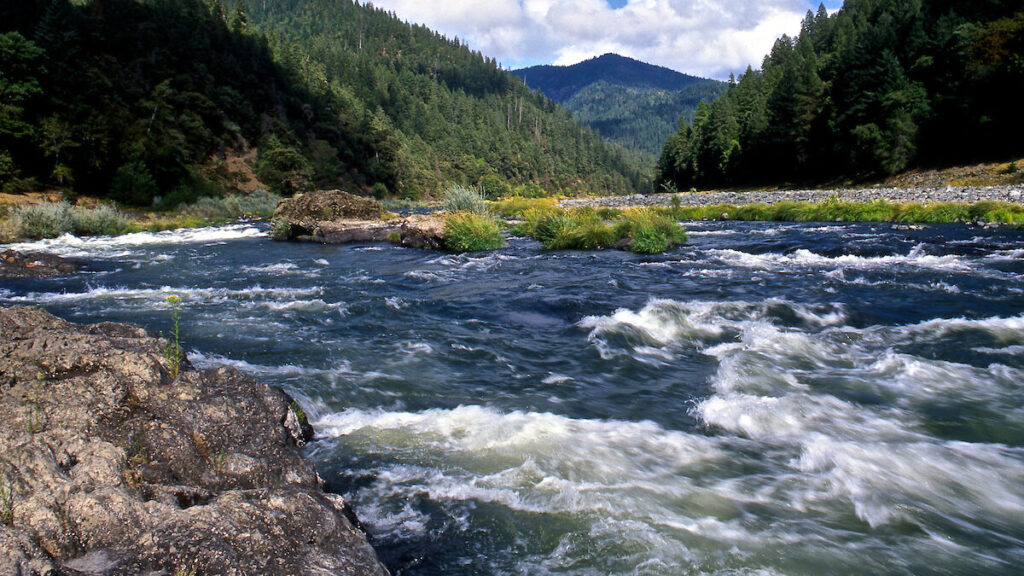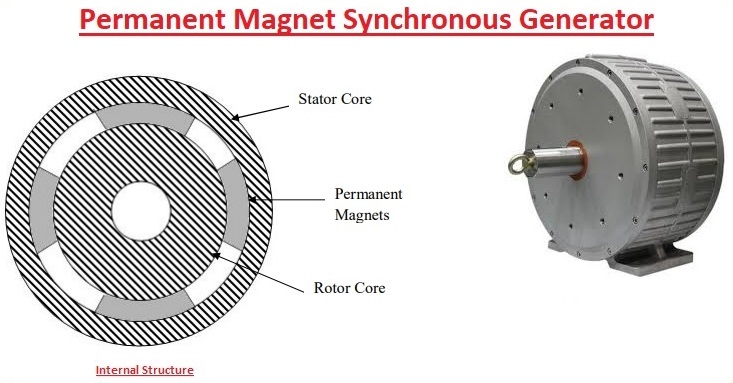I. Introduction
– Definition of permanent magnet hydroelectric generator

A permanent magnet hydroelectric generator is a type of generator that utilizes the energy from moving water to generate electrical power. It consists of a rotor with permanent magnets and a stator with copper coils. As the rotor turns, it creates a magnetic field that induces an electric current in the stator coils, producing electricity. The use of permanent magnets in the rotor eliminates the need for an external power source to create a magnetic field, making the generator more efficient and reliable. Permanent magnet hydroelectric generators are commonly used in small-scale hydroelectric power plants and micro-hydro systems.
– Importance of hydroelectric power generation
Hydroelectric power generation is important for several reasons:
1. Clean and renewable energy: Hydroelectric power is a renewable energy source that does not produce greenhouse gas emissions or air pollution, making it environmentally friendly and sustainable.
2. Cost-effective: Hydroelectric power plants have a lower operating cost than other forms of power generation and can provide a reliable source of energy for decades.
3. Energy storage: Hydroelectric power plants can store energy by retaining water in reservoirs, which can be used during peak demand periods.
4. Job creation: Hydroelectric power generation creates jobs in construction, engineering, and maintenance, providing economic benefits to local communities.
5. Flood control: Hydroelectric power plants can help control flooding by regulating water flow and managing water levels in rivers and reservoirs.
6. Diversification of energy sources: Hydroelectric power generation diversifies the sources of energy, reducing reliance on fossil fuels and increasing energy security.
Overall, hydroelectric power generation is an important component of a sustainable energy mix and can contribute to a cleaner, more reliable, and cost-effective energy future.
II. Working principle of permanent magnet hydroelectric generator

– Role of permanent magnets in power generation
Permanent magnets play an important role in power generation. They are used in various types of generators, including wind turbines, hydroelectric generators, and even in some types of conventional power plants.
In wind turbines, permanent magnets are used in the rotor (the rotating part of the generator) to create a magnetic field that interacts with the stator (the stationary part of the generator) to produce electrical power. Similarly, in hydroelectric generators, permanent magnets are used to create a magnetic field that interacts with the moving water to produce electrical power.
Permanent magnets are also used in some types of conventional power plants, such as gas turbine power plants. In these plants, permanent magnets are used in the generator to produce electrical power from the rotation of the turbine.
Overall, permanent magnets are an essential component of power generation, helping to produce the electrical power that is essential to modern life.
– Comparison with traditional hydroelectric generators
Permanent magnet generators (PMGs) are a type of generator that uses permanent magnets to create a magnetic field. They are often used in small-scale wind turbines and hydroelectric systems. PMGs are generally more efficient than traditional hydroelectric generators because they have fewer moving parts and can operate at lower speeds.
Traditional hydroelectric generators use a turbine to generate electricity. The turbine is powered by the flow of water through the system, which turns a generator to produce electricity. These generators are typically larger and more complex than PMGs and require maintenance and repair over time.
One advantage of traditional hydroelectric generators is that they can produce a large amount of electricity, making them suitable for large-scale applications. They also have a long lifespan and can operate for many years with proper maintenance. However, they can be expensive to install and require a significant amount of infrastructure to operate.
PMGs, on the other hand, are more suitable for small-scale applications and can be installed in remote locations without the need for extensive infrastructure. They are also less expensive than traditional hydroelectric generators and require less maintenance over time.
III. Advantages of permanent magnet hydroelectric generators
1. Higher efficiency and power output: Permanent magnet hydroelectric generators (PMHG) have a higher efficiency and power output than traditional generators. This is because they have a higher magnetic field strength and do not require an excitation current, resulting in less energy loss.
2. Lower maintenance requirements: PMHGs have fewer moving parts than traditional generators, which means they require less maintenance. This reduces the need for regular repairs and replacements, resulting in lower maintenance costs.
3. Environmental benefits: PMHGs are environmentally friendly because they do not emit harmful pollutants, such as carbon dioxide and other greenhouse gases. They also do not require fuel, which means they do not contribute to air or water pollution.
4. Durability and long lifespan: PMHGs are durable and have a long lifespan. They are made from high-quality materials that are resistant to corrosion and wear and tear. This means they can operate for many years without needing to be replaced.
5. Smaller size and weight: PMHGs are smaller and lighter than traditional generators, which makes them easier to install and transport. This can be particularly beneficial for remote or inaccessible locations.
6. Better performance in low-speed applications: PMHGs can operate at lower speeds than traditional generators, which means they can be used in low-head or low-flow applications. This makes them suitable for use in small-scale hydroelectric power systems.

IV. Applications of permanent magnet hydroelectric generators
Permanent magnet hydroelectric generators are a popular choice for small-scale hydroelectric power plants due to their efficiency, reliability, and low maintenance requirements. These generators can be installed in various types of hydroelectric power plants, including run-of-river, impoundment, and pumped storage systems.
In addition to their use in small-scale hydroelectric power plants, permanent magnet hydroelectric generators can also be integrated with other renewable energy sources such as wind and solar power. This integration allows for more stable and consistent power output, reducing the reliance on fossil fuels.
Furthermore, permanent magnet hydroelectric generators have the potential for off-grid power generation. This means that they can provide electricity to remote areas where the grid is not available or is unreliable. This can include rural communities, islands, and disaster-stricken areas.
Overall, the applications of permanent magnet hydroelectric generators are vast and varied. They offer a reliable, efficient, and sustainable source of energy that can be used in a range of settings, from small-scale hydroelectric power plants to off-grid power generation.
V. Challenges and limitations of permanent magnet hydroelectric generators
1. Limited Power Output: Permanent magnet hydroelectric generators have limited power output as they are dependent on the water flow and the head of the water. This means that they may not be suitable for large-scale power generation.
2. High Initial Cost: Permanent magnet hydroelectric generators are expensive to install and require a significant upfront investment. The cost of the generator is largely dependent on the size and capacity of the generator.
3. Maintenance Costs: Permanent magnet hydroelectric generators require regular maintenance to ensure they operate efficiently and reliably. This includes cleaning, lubrication, and replacement of parts. The cost of maintenance is also dependent on the size and capacity of the generator.
4. Site-Specific: Permanent magnet hydroelectric generators are site-specific, meaning they can only be installed in areas with sufficient water flow and head. This limits the number of potential locations for installation.
5. Environmental Impact: The installation of permanent magnet hydroelectric generators can have an impact on the environment, particularly on aquatic ecosystems. The construction of dams and other structures can alter the natural flow of water, affecting fish migration and breeding patterns.
6. Weather Dependent: Permanent magnet hydroelectric generators are weather dependent and may not operate at full capacity during dry seasons or when water levels are low. This can affect the reliability and consistency of power generation.
VI. Future developments and opportunities
Permanent magnet hydroelectric generators (PMHGs) are becoming increasingly popular due to their high efficiency, low maintenance, and reduced environmental impact. They are used in a variety of applications, including small-scale hydroelectric power plants, marine energy systems, and wind turbines.
One of the main advantages of PMHGs is their ability to generate electricity at low speeds, which makes them ideal for use in low-head hydroelectric power plants. PMHGs can also operate at variable speeds, which allows them to adjust their output to match the available water flow.
In the future, it is expected that PMHGs will become even more efficient and cost-effective, making them a more attractive option for renewable energy generation. Advances in materials science and manufacturing techniques are expected to lead to the development of stronger and more durable magnets, which will further improve the performance of PMHGs.
The increasing demand for renewable energy sources is also expected to create new opportunities for PMHGs. As more countries and companies invest in renewable energy, there will be a growing need for reliable and efficient generators that can be used in a range of applications.
Overall, the future of PMHGs looks bright, and they are likely to play an increasingly important role in the transition to a more sustainable energy future.